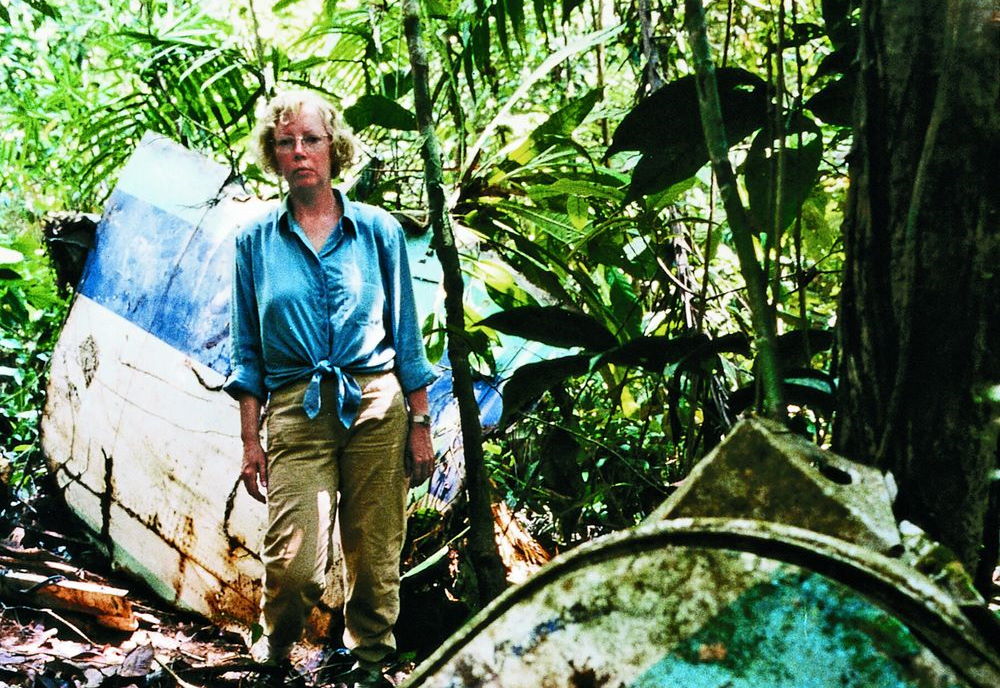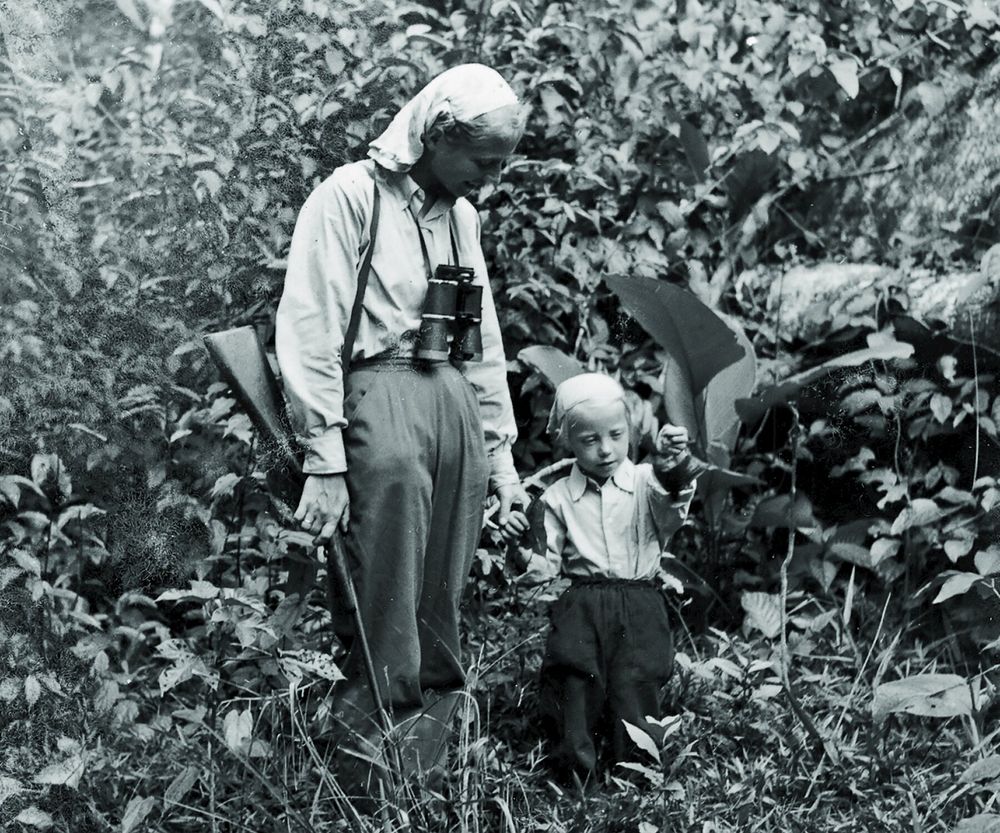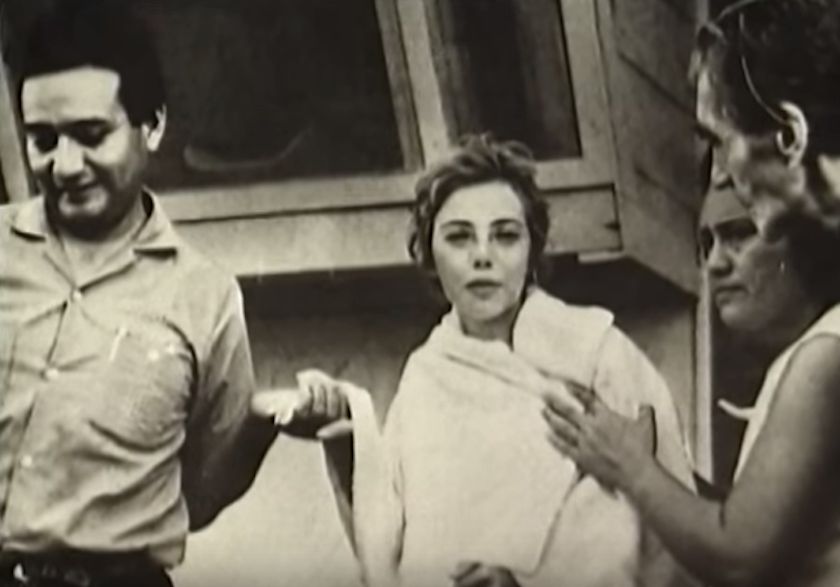Juliane Koepcke was seventeen and desperate to get home. She had just graduated from high school in Lima, and was returning to her home in the biological research station of Panguana, that her parents founded, deep in the Amazonian forest about 150 km south of Pucallpa. She had been living in Panguana, on and off, for three years with her mother, Maria, and her father, Hans-Wilhelm Koepcke, both zoologists.
Their flight was on Christmas eve of 1971, and the plane was already seven hours late. It was just before noon when Juliane and her mother finally boarded the flight. The flight to Pucallpa was supposed to last less than an hour. About 25 minutes after takeoff, the LANSA Flight 508 flew into an area of thunderstorms and severe turbulence and the plane began to shake violently. Overhead compartments flew open, showering passengers and crew with luggage and Christmas presents. The plane could have turned back but there was pressure to meet the holiday schedule, and so the pilots continued to fly.
Juliane Koepcke returns to the crash site in 1998.
After about ten minutes of shaking, Juliane saw a very bright flash of lighting strike the left wing. She heard her mother say, "That is the end, it's all over." Immediately after, the airplane began to nosedive.
“It was pitch black and people were screaming, then the deep roaring of the engines filled my head completely,” Juliane recalls.
As the airplane fell, it broke apart separating her from everyone else onboard. The next thing she knew she was out in the open, still strapped to her seat and plummeting to the jungle below.
“I could see the canopy of the jungle spinning towards me. Then I lost consciousness and remember nothing of the impact,” she said.
When she woke up the next day, she found herself surrounded by dense foliage. There was no one else.
The airplane was flying at an altitude of 21,000 feet when it ran into the thunderstorm. It broke apart at around 10,000 feet, and she fell from that height. Her survival was miraculous. Even her injuries—a broken collarbone, a sprained knee and a few gashes on her shoulders and legs—were minor.
“I lay there, almost like an embryo for the rest of the day and a whole night, until the next morning,” she wrote in her memoir, When I Fell From the Sky, published in 2011. “I am completely soaked, covered with mud and dirt, for it must have been pouring rain for a day and a night.”
It was the middle of the wet season, so there was no fruit within reach to pick and no dry twigs with which to make a fire.
Juliane Koepcke with her parents.
Despite her precarious situation, Juliane did not feel fear, only “a boundless feeling of abandonment.” Having spent three years with her parents on their research station, Juliane learned a lot about life in the rainforest. “I recognized the sounds of wildlife from Panguana and realized I was in the same jungle,” she said.
Her father had taught Juliane how to survive should she ever get lost in the inhospitable undergrowth. “Always look for a stream,” her father had said. “Follow the stream to a river. The rivers are the roads of the Konibo, Shipibo, and Cacataibo Indians, the woodcutters, and the plantation owners. If you get lost in the jungle the rivers may be your only hope of reaching civilization.” So arming herself with a stick to ward off poisonous snakes, Juliane began searching for a river.
Juliane was wearing a very short, sleeveless mini-dress and white sandals. She had lost her glasses without which she could barely see. She also lost one shoe but kept the other to test the ground ahead of her as she walked.
The first thing that Juliane did was search for her mother in the vicinity of the crash. But she could find no debris. A short distance away, she found a small parcel that had fallen from the plane inside which there were some toys and a piece of Christmas cake. She tried eating the cake but it was saturated with water from the rain. But there was a small bag of sweets in the Christmas parcel. She tucked it in.
Juliane and her mother foray into the rainforest in 1959.
The jungle was full of dangers. Poisonous spiders and snakes hid among the foliage. In the air there were flies and mosquitoes. There were delicious-looking fruits and berries hanging temptingly from the nearby trees but Juliane avoided anything she didn’t recognize because they might be poisonous.
Juliane soon found a small spring, and began following it, hoping that it would eventually lead to a river.
On the fourth day, she found the first debris from the crash—a bench with three passengers rammed head first into the earth. The sight of the corpses sent a chill down her spine.
Lack of food, the heat, the incessant biting from the mosquitoes, and her wounds were beginning to drag her down. Her collar bone, broken in the disaster, was becoming more and more painful each day. The wound in her foot made walking more difficult as the days passed slowly by. But still she pressed on. The river was getting wider and flowing more rapidly. On the 10th day, she stumbled along the edge of a large river. There she found a small boat moored to the river bank, and near the boat was a path which led to a little hut. There was no one inside.
She found a gallon of gasoline, and used it to render crude first-aid upon her wounds. She remembered her father treating a maggot infection on their dog with kerosene and tried the same on her wounds with the gasoline. As soon as she poured gasoline on her wounds, dozens of maggots came crawling out of it. She pulled some thirty maggots from her cuts and felt immensely proud with herself.
Juliane Koepcke after her ordeal.
That night she slept on the bare boards of the hut. The following morning she intended carrying on down the river but as it was pouring with rain she decided to rest for a while. That rain saved her life. A few hours later, a group of fishermen came barging into the hut and were taken aback by the sight of a haggard white women covered with sores and barely alive. The men treated her wounds and gave her something to eat. The next day, they took her to the nearest village by boat, and from there she was airlifted to a hospital.
Juliane Koepcke had spent eleven nights in the Amazon forest. She was the only survivor of the flight.
After her harrowing experience, Juliane moved back to Germany from where her parents came. Like her parents, Koepcke earned a degree in biology and returned to Peru to do extensive research on mammals, especially bats. Her survival story has been the subject a 1974 Italian movie called Miracles Still Happen, and a documentary by director Werner Herzog called Wings of Hope. In 2011, she published her own autobiography, When I Fell From the Sky.
Now married to Erich Diller, an entomologist who specializes in parasitic wasps, Juliane Diller now leads the conservation her parents founded. Panguana is now the oldest biological research station in Peru. The preserve is home to more than 500 species of trees, 160 types of reptiles and amphibians, 100 different kinds of fish, seven varieties of monkey and 380 bird species.
Juliane Koepcke returns to the crash site in 1998.
References:
# Franz Lidz, She Fell Nearly 2 Miles, and Walked Away, New York Times
# Juliane Koepcke: How I survived a plane crash, BBC
# Following a jungle stream saved Juliane Koepcke’s life, Look And Learn
# Juliane Koepcke, Wikipedia

















Comments
Post a Comment